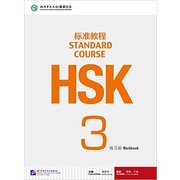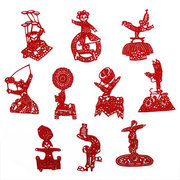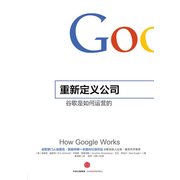- 出版社: 中国人民大学出版社; 第1版 (2013年4月1日)
- 外文书名: Ielt Reading
- 平装: 134页
- 语种: 简体中文, 英语
- 开本: 16
- ISBN: 9787300171142, 7300171141
- 条形码: 9787300171142
- 商品尺寸: 25.2 x 18.4 x 1.4 cm
- 商品重量: 299 g
- 品牌: 中国人民大学出版社
Details
基本信息
编辑推荐
《雅思阅读真经总纲》附赠机经,能够帮助考生快速、全面熟悉阅读题材并结合真题预测。
作者简介
刘洪波,贵学教育创始人,北京雅思总校校长。年少沉醉于水墨书法,道经音律;后负笈海外,喜两希文化,研习拉丁。归国后投身英语教育事业,培养出大批雅思、托福、四六级、考研英语名师。连续数年赴西部支教,共培训上千名初高中英语教师。
著有《英文字根词源精讲》、《最简化雅思写作》、《最快速雅思阅读》、《雅思经典教程》、《雅思基础教程》、《托福词汇精讲》等数十部作品。其留学散文被《海外文摘》、《青年文摘》等众多媒体登载,广为流传。其中2004年出版的《雅思阅读真经》是国内第一本以真题题库为蓝本编写的培训教材,考试命中率极高,畅销海内外,开创了真题机经的教材流派。
2007年各大教育媒体将其誉为“雅思教父”;2009年当选“建国60年推动中国教育培训发展功勋人物”;网易年度大选“教育产业十大领军人物”。多次应邀赴剑桥、牛津等大学进行英语教学培训交流研讨。
在全国高校巡回演讲数百场,听过其讲座和课程的学员不可数。学员点评其授课风格为:行云流水,旁征博引,激情四射,励志人生。
目录
第1回 雅思阅读真经200字总纲
雅思阅读真经总纲
标志一览表
第2回 阅读先看题,定位快寻觅
真题的顺序
正确选择定位词
手把手教你读
真经阅读法
总纲注释自测
第3回 同义替换多,单词有灵犀
无招胜有招
同义替换的三种手法
高手和低手的区别
阅读真经原文标注法
修炼阅读内功
总纲注释自测
第4回 填词有规律,前后找痕迹
单词填写题命题规律与解题要诀
原文选词填空完成摘要
从单词列表中选词填空完成摘要
原文选词填空完成句子
从原文选词回 答问题
总纲注释自测
第5回 我有七种意,天下剑桥题
是非判断题命题规律与解题要诀
两个问题
答案概率
四项注意
TRUE题命题规律
FALSE题命题规律
NOTGIVEN题命题规律
总纲注释自测
第6回 段中找两点,中心藏后边
段落中心题命题规律与解题诀窍
四项注意
中心句对应法
关键词对应法
总纲注释自测
第7回 匹配乱序多,定位找同义
匹配题命题规律与解题诀窍
句子信息与段落匹配
关系匹配(单词短语)
关系匹配(句子)
总纲注释自测
第8回 多选找并列,单选是TRUE题
选择题命题规律与解题诀窍
单选题
多选题
选标题
总纲注释自测
第9回 顺藤能摸瓜,按图可索骥
图表题命题规律与解题诀窍
填表题
填图题
选图题
总纲注释自测
第10回 三剑已合璧,笑看雅思谜
雅思阅读高分备考计划
文摘
插图:

B During the industrial revolution and population explosion of the 19th and 20th centuries,the demand for water rose dramatically.Unprecedented construction of tens of thousands of monumental engineering projects designed to control floods,protect clean water supplies,and provide water for irrigation and hydropower brought great benefits to hundreds of millions of people.Food production has kept pace with soaring populations mainly because of the expansion of artificial irrigation systems that make possible the growth of 40% of the world's food.Nearly one fifth of all the electricity generated worldwide is produced by turbines spun by the power of falling water.
C Yet there is a dark side to this picture: despite our progress,half of the world's population still suffers,with water services inferior to those available to the ancient Greeks and Romans.As the United Nations report on access to water reiterated in November 2001,more than one billion people lack access to clean drinking water; some two and a half billion do not have adequate sanitation services.Preventable water-related diseases kill an estimated 10,000 to 20,000 children every day,and the latest evidence suggests that we are.falling behind in efforts to solve these problems.
D The consequences of our water policies extend beyond jeopardising human health.Tens of millions of people have been forced to move from their homes-often with little warning or compensation-to make way for the reservoirs behind dams.More than 20% of all freshwater fish species are now threatened or endangered because dams and water withdrawals have destroyed the free-flowing river ecosystems where they thriv.e.Certain irrigation practices degrade soil quality and reduce agricultural productivity.Groundwater aquifers are being pumped down faster than they are naturally replenished in parts of India,China,the USA and elsewhere.And disputes over shared water resources have led to violence and continue to raise local,national and even international tensions.
You may also be interested in the following product(s)
-

IKSJ005 ink pool red
£22.95 -

汪曾祺精选集 精装
£8.95








 Facebook
Facebook Twitter
Twitter Pinterest
Pinterest Google +
Google +